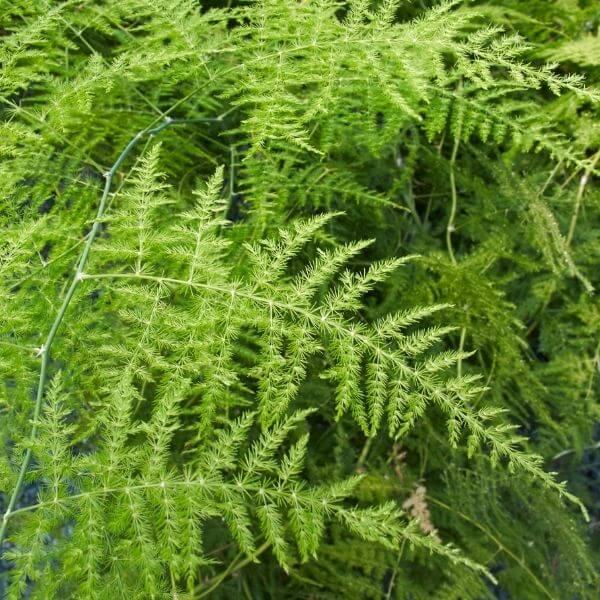Asparagus Fern Plant
Asparagus Fern (Asparagus setaceus) is a fern growing 2-3 feet tall, hardy in USDA zones 9-11, with moderate growth in moist, well-drained soil, requiring partial shade and high moisture, and it is neither edible nor medicinal.

Habit
Fern
Height
0.3-0.6 m
Growth
Moderate
Soil
Well-drained fertile soil
Shade
Partial shade
Moisture
High
Edible
No
Medicinal
No
Origin
Southern Africa
Climatic Condition
Tropical
Temperature (°)
18-24°C
Humidity (%)
60-80%
Potting media
Peat-based mix
Fertilizers
Balanced NPK
Watering
Keep soil consistently moist
Plant Weight
500-800 g
Flowering Time
Rarely flowers indoors
Soil Ph level
6.0 - 6.5
Water Ph level
6.0 - 7.0
Soil EC
Medium
Yield Per Plant
Ornamental use
NPK ratio
10:20:10
life Span
Perennial
Health Benefits
Suggested Grow Media or Potting Mix ?
50% peat moss, 30% perlite, 20% compost
Suggested Fertigation/Fertilizers
Fertilize every 2 weeks with a balanced, water-soluble fertilizer.
Common Diseases and Remedies
HEALTH BENEFITS
1. Air Purification
- Asparagus ferns can help improve indoor air quality by absorbing toxins and increasing oxygen levels.
2. Stress Reduction
- Green plants, including asparagus ferns, can promote relaxation, reduce stress, and improve mood.
3. Anti-inflammatory & Antioxidant Properties (Related to Asparagus Family)
- Other species of asparagus, like Asparagus racemosus, are known for their antioxidant and anti-inflammatory properties, supporting immune health and digestion.
4. Humidity Regulation
- Asparagus ferns can help maintain indoor humidity, which may reduce respiratory issues and dry skin.

